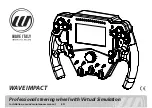
Chapter 1
About Close Combat
3
You can choose to exercise “super” control over your troops by setting soldiers in
the “always obey orders” mode before starting a game, but you can’t switch them
out of this mode during play, and gains made this way usually lead to increased
casualties and decreased team performance. For more information, see the section
titled “Who’s in Control? You Choose.”
Taking Other Realistic Factors into Account
You’ll notice as you play that Close Combat tracks soldier fatigue and adjusts
soldier and squad performance to reflect cumulative fatigue. As in actual battle,
men who have run long distances carrying heavy loads, or who have to drag big
weapons into position, become fatigued, and their morale suffers accordingly.
Another distinctive feature of Close Combat is that, as in real combat, players
can never take for granted that a shot fired will hit or destroy a target. Terrain
may shield the target and deflect the shot. And, as in real combat, soldiers who
are pinned down by enemy fire, extremely tired, or low on morale don’t shoot
accurately.
Weapons have their limitations as well. Every weapon used in Close Combat has a
base chance to hit, depending on the distance to the target and the type of ammuni-
tion used, and hitting a target doesn’t guarantee its destruction. The game resolves
the effect of each hit based on target protection in eight directions, on the
weapon’s penetrating power, and on its blast effect and lethal radius.
Dynamic Play Balancing Means No Two Games Play the Same
A major feature in Close Combat is the ability of the game to dynamically
balance itself against its opponent. Close Combat adjusts the relative strength of
each side—American and German—from one battle to the next throughout the
campaign to represent historical strength. However, a player winning most
battles decisively will face stronger enemy forces with each win. This dynamic
play balancing means more challenge for expert players and less frustration
for novices.
Play balancing also means that the game adjusts its level of difficulty to suit the
quality of play in any given game. For example, players on the American side who
do well in the first scenario are less likely to get reinforcements or replacements to
bring their forces up to the full complement specified in the historical order of
battle. If players lead less successfully, the reverse applies, and they get more
reinforcements and replacements but at a cost in time, which delays their eventual
assault on Saint-Lô.
Summary of Contents for Close Combat
Page 57: ...56 Close Combat ...
Page 163: ...162 Close Combat ...





































